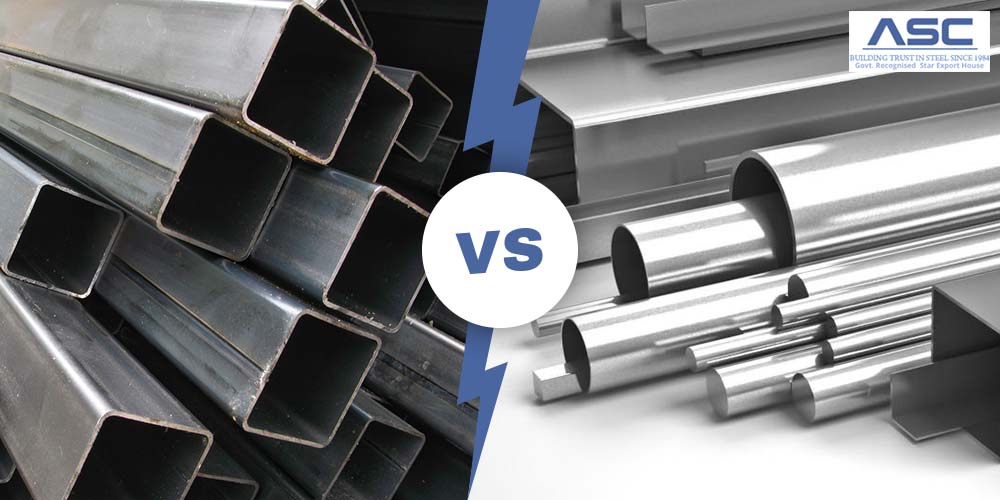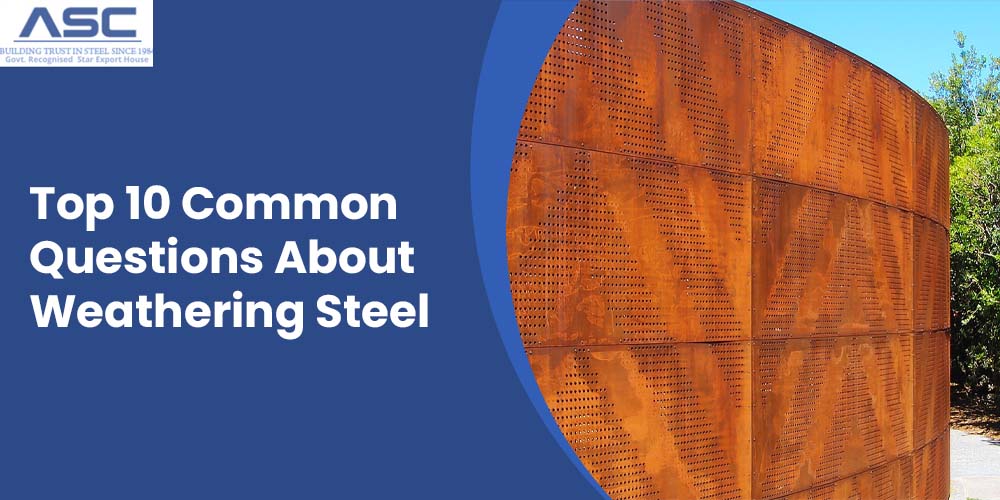Carbon Steel vs. Mild Steel: Which is best for you?
by AMC
Posted on April 10, 2022 at 04:52 PM

The question of whether carbon steel or mild steel is better is actually a bit of a trick question, since mild steel is a type of carbon steel. Carbon is a ubiquitous element in all steel, and if it is the primary alloying element, then the steel is classified as carbon steel. Mild steel is a type of low-carbon steel. However, there are also other types of carbon steel with varying carbon contents, and the best option depends on the specific application in which the steel will be used.
The main difference between Carbon Steel and Mild Steel is the amount of carbon present in each. Carbon Steel has a higher concentration of carbon, while Mild Steel contains a comparatively lower amount of carbon.
What is Carbon Steel?
Carbon Steel typically contains between 0.05% and 1.70% carbon by weight. Increasing the carbon content of steel can enhance its strength, and it is generally the most cost-effective way to improve steel's performance. However, higher carbon concentrations can also make steel more brittle and less ductile, so finding the right balance is crucial. High Carbon Steel contains between 0.3% and 1.70% carbon, while Low Carbon Steel typically contains between 0.05% and 0.15% carbon. Today, Low Carbon Steel is the most commonly used type of steel due to its relatively low production cost.
High Carbon Steel is preferred over Low Carbon Steel for certain applications due to its ability to undergo heat treatment and develop enhanced properties. In addition to carbon, other elemental impurities such as Sulphur can impart unique characteristics to steel. Some common uses for High Carbon Steel include rail steels, pre-stressed concrete, wire rope, tire reinforcement, knives, saw blades, gear wheels, chains, and other applications where strength and durability are required.
What is Mild Steel?
Mild Steel is a type of carbon steel that contains a relatively low amount of carbon, making it the mildest form of carbon steel. In addition to carbon, it may also contain other elements such as manganese, silicon, and trace amounts of phosphorus. These elements work to protect the structure of the iron in the metal by preventing dislocations within the iron crystals. The amount of carbon added to the steel directly affects its strength, with higher percentages of carbon resulting in stronger steel. As a hardening agent, carbon plays a significant role in the strength of steel.
Mild Steel is the most common type of steel and accounts for 85% of all steel products in the United States. It has gained popularity due to its desirable properties such as strength, ductility, and affordability. Mild steel is commonly used in the production of wires, steel sheets, and other building materials.
Carbon Steel vs. Mild Steel
Composition
- Carbon steel and mild steel both consist mainly of iron.
- Carbon steel contains a higher percentage of carbon (0.05-1.70% by weight) than mild steel (0.05-0.25% by weight).
- The increased carbon content in carbon steel makes it harder and stronger, while mild steel is more malleable and ductile due to its lower carbon content.
- Carbon steel is often used in applications where strength is critical, such as in construction or industrial manufacturing.
- Mild steel is commonly used in automotive components, structural frames, and other applications where flexibility and formability are important.
- Carbon steel and mild steel both consist primarily of iron and carbon, but carbon steel contains a higher percentage of carbon than mild steel.
- The higher carbon content in carbon steel makes it stronger and more brittle than mild steel, but also gives it greater hardness and wear resistance.
- On the other hand, mild steel has a lower amount of carbon which makes it more malleable and ductile.
Advantages
- Carbon steel is more robust than mild steel due to its higher carbon content, making it an ideal choice for applications requiring significant strength.
- Compared to mild steel, carbon steel is less prone to rusting, increasing its durability and longevity in certain applications.
- Carbon steel is often used in industrial and construction applications, such as machinery and equipment, as well as in automotive and aerospace manufacturing.
- Mild steel, on the other hand, is more malleable and ductile than carbon steel, making it easier to form into different shapes and sizes.
- Mild steel is commonly used in the construction industry for structural frames, facades, and roofing due to its strength-to-weight ratio.
- Mild steel is also frequently used in manufacturing processes such as forging, welding, and machining.
Disadvantages
- Carbon steel is generally more expensive than mild steel due to its higher carbon content.
- Welding carbon steel can be more challenging than welding mild steel, which may make it less suitable for certain applications that require welding.
Properties of Carbon Steel and Mild Steel
Here are some properties of Carbon Steel and Mild Steel:
Carbon Steel:
- Typically contains 0.05% to 1.70% carbon by weight
- Higher carbon content makes it stronger but also more brittle
- Can be heat-treated to improve its properties
- Typically more expensive than Mild Steel
- Used for applications where strength and durability are required, such as knives, saw blades, and gear wheels
Mild Steel:
- Contains a relatively low amount of carbon
- More ductile and malleable than Carbon Steel
- Often contains other elements such as manganese and silicon
- Economical and commonly used in construction and building materials
- Typically less expensive than Carbon Steel
Uses for Carbon Steel and Mild Steel
Carbon Steel and Mild Steel have different properties that make them suitable for different applications. Carbon Steel is often used in construction due to its strength and durability, while Mild Steel is commonly used in automotive components because it can be easily formed into various shapes without losing strength or durability. Both metals are also used in manufacturing applications such as machine parts and tools due to their high strength and wear resistance capabilities, respectively.
Mild Steel's malleability makes it ideal for use in industrial manufacturing processes such as forging, welding, and machining. It is also commonly used in the construction industry for structural frames, facades, beams, columns, and roofs due to its favorable strength-to-weight ratio. On the other hand, Carbon Steel's hardness and wear resistance properties make it a popular choice for knives, blades, tools, and other cutting implements. It can also be found in parts requiring higher levels of strength or wear resistance, such as gears or shafts.
Summary:
In summary, carbon steel and mild steel each have unique advantages depending on their intended application. Mild steel is a good choice if you need a metal that is highly malleable and won't crack during shaping or bending. On the other hand, if you require a material with excellent strength and wear resistance, then carbon steel is a suitable option. By understanding the differences between these two types of steel, you can make an informed decision about which one will best meet your project requirements.

Difference Between Carbon Steel and Stainless Steel
Even if two things are made of steel, that doesn't mean they are made of the same kind of steel. There are many kinds of steel, but carbon steel and stainless steel are the most common.

